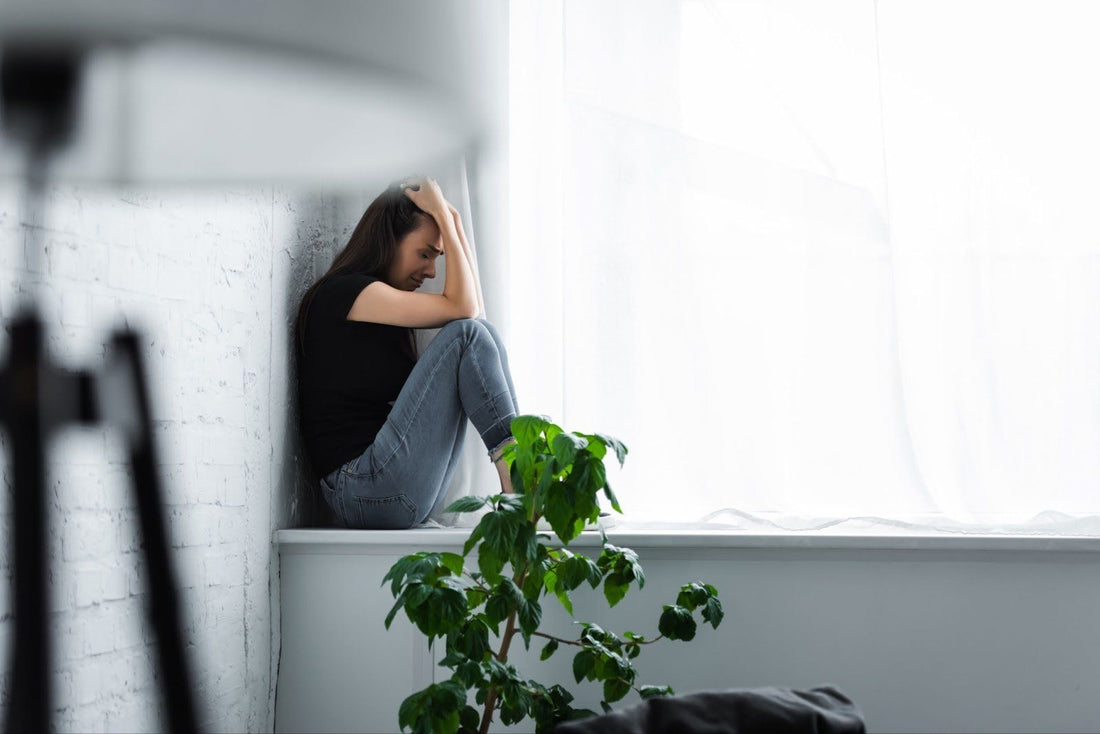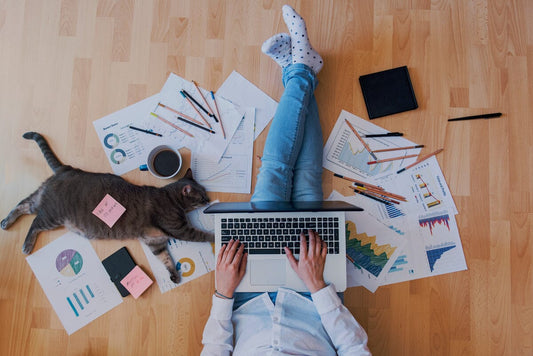When alcohol, drugs, or other medications trigger anxiety or panic attacks, the diagnostic name for these occurrences is “substance-induced anxiety.” While occasional anxiety is normal, especially during times of stress, substance-induced anxiety disorder results in clinically notable distress and even functional impairments, such as an inability to comprehend information or complete tasks.1 Substance-induced anxiety can be triggered by a number of substances, including alcohol, caffeine, cocaine, nicotine, sedatives, and more. Find out the signs and symptoms of substance-induced anxiety, what researchers say about the relationship between substance abuse and anxiety, and how long the disorder typically lasts.
What Is Substance-Induced Anxiety?
Substance-induced anxiety can occur right after a person becomes intoxicated or it can occur during or shortly after withdrawal. Individuals with a history of anxiety without substance abuse typically do not meet the criteria for a clinical diagnosis of substance-induced anxiety disorder.2
Signs and symptoms of substance-induced anxiety include:3
- Thoughts of impending doom
- Difficulty falling asleep or waking up often during the night
- Trouble concentrating or remembering things
- Fear of losing control or “going crazy”
- Stomach distress
- Chills, hot flashes, sweating, shaking, numbness, or a racing heart
- Uneasy breathing, trouble swallowing, or chest pain
Relationship Between Substance Abuse & Anxiety Disorders
Multiple national surveys have found that about half of those who experience a mental illness during their lifetimes will also experience a substance use disorder and vice versa.4 While substance-induced anxiety can develop at any time, the brain is most impressionable during adolescence. Early drug use is a strong risk factor for later development of substance use disorders5 and it may also be a risk factor for the later occurrence of other mental illnesses.6
When an individual takes a substance, chemicals in the brain get thrown out of balance. Alcohol and other central nervous system (CNS) depressants, including benzodiazepines and barbiturates, may initially appear to have calming effects on stress levels, but excessive use of these drugs can lead to impairments in an individual’s physical and mental functioning, which can bring on more stress and anxiety. However, it is more common that withdrawal from alcohol and other drugs may trigger rebound anxiety and panic attacks. This is what also happens with stimulant drugs in which withdrawal is characterized by a sudden drop in neurotransmitter levels, leading to symptoms of anxiety.7 One of the common side effects of stimulant drugs prescribed for ADHD is increased anxiety, especially for people who already struggle with an anxiety disorder.8
In some cases, a single use of a drug can induce anxiety that lasts beyond the drug’s intoxicating effects, even months later. In one 2018 study, a 35-year-old man with no mental illness history took MDMA and came to a hospital seeking help for acute anxiety and panic three days after ingesting the drug.9 Treated with a combination of behavioral therapy and other pharmaceutical drugs designed to improve serotonin levels in the brain, the patient finally found some relief with the selective serotonin reuptake inhibitor sertraline. However, it took 2.5 months for the anxiety symptoms to fully subside. At six months, he was finally able to taper off the sertraline and had no resurgence of anxiety symptoms afterward.
How Long Does Substance Abuse Anxiety Last?
There is no set timeline on how long substance abuse anxiety lasts. In some cases, the anxiety only lasts as long as the person is intoxicated. In the case of withdrawal, symptoms can last up to four weeks, or longer, as in the case of the patient who took MDMA in the above example.10
While pharmaceutical drugs like sertraline can make a difference in helping drug-induced anxiety go away, they aren’t the only solution. And though it’s easy to assume that simply taking away the anxiety-inducing substance will clear everything up (it's a good start!), there are several other actions to take to ensure the cycle doesn’t begin again. These include:
- Tapering off substance: After identifying the anxiety-inducing substance, it’s best to taper off under controlled circumstances to avoid harmful withdrawal effects, especially in the case of long-term, heavy use.11
- Getting support: From support groups to counseling, there are various opportunities to obtain support when discontinuing a drug and working through your anxiety.
- Learning to manage stress: Stress may be one of the primary reasons you turn to substances in the first place. By finding ways to manage this stress naturally, perhaps through mindfulness and relaxation techniques, you’ll learn to transform those feelings that lead you to reach for (and abuse) substances. Steering clear of places where you usually drink or use drugs may also help.
- Adopting a healthy lifestyle: Beyond managing your stress levels, adopting a healthy lifestyle can also help reduce anxiety. This includes following a nutritious diet, exercising regularly, making sure you get enough sleep, and minimizing screen time.
Brillia for Adults is another option to help relieve stress and anxiety without the harsh chemicals found in prescription drugs and the harmful side effects. A homeopathic over-the-counter remedy that reduces feelings of anxiety, restlessness, irritability, and impulsivity, Brillia for Adults works best in combination with healthy lifestyle choices and has no side effects or contraindications with other drugs.
Brillia for Adults is a gentle non-prescription medication that does not have the harmful side effects of prescription stimulant medications. If you’re already taking medication for anxiety or ADHD, Brillia can be taken in tandem with other medications or can be used as a replacement for some medications once the product builds up in the system. Some people also use Brillia insead of increasing their dosage of other medications. Please keep in mind that Brillia is a cumulative product that takes 2-3 weeks to start working. If you are considering stopping other prescribed medication, be sure to consult your doctor first. Find out more about how Brillia works.


 Improve focus and clarity.
Improve focus and clarity.


